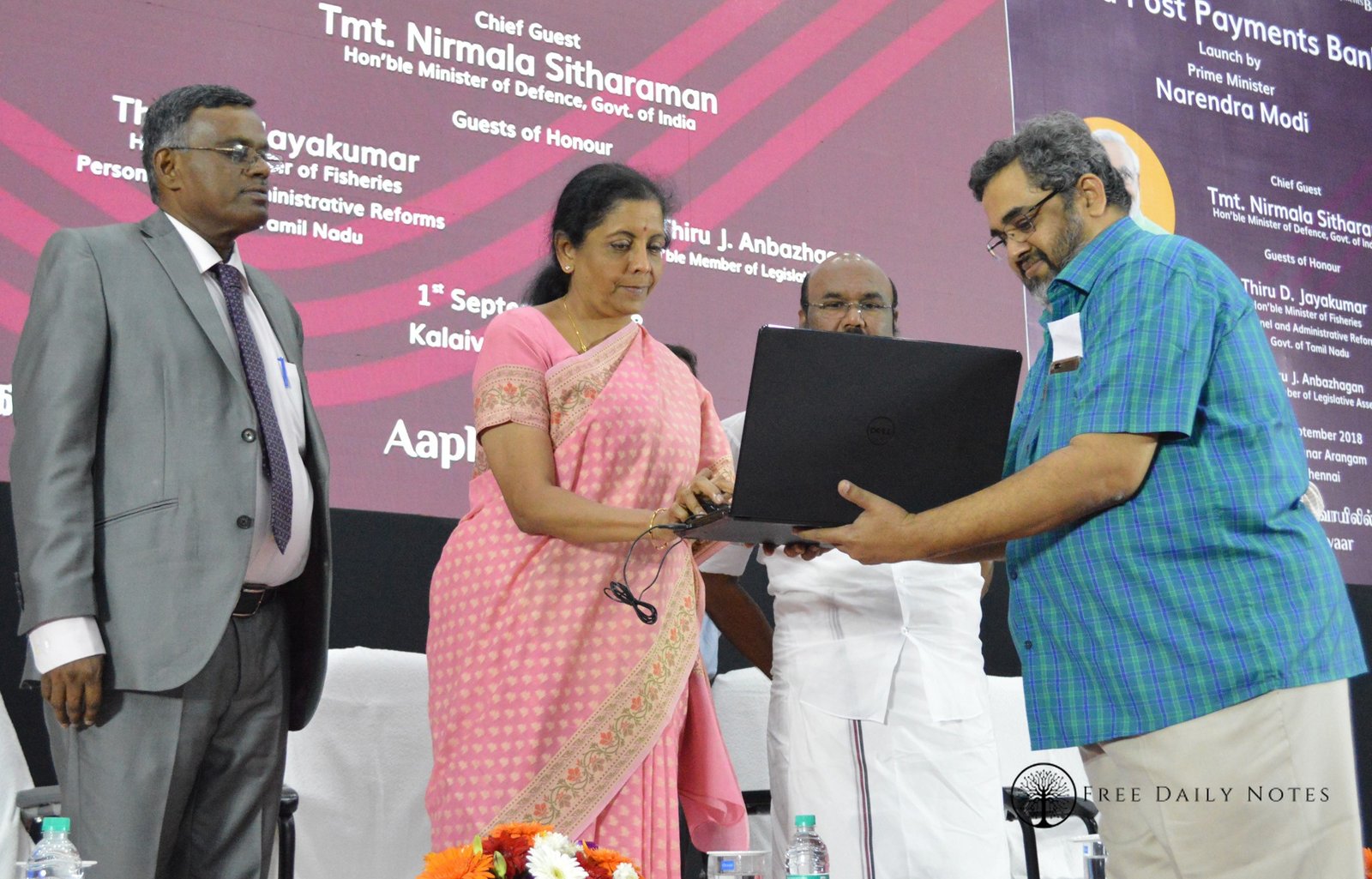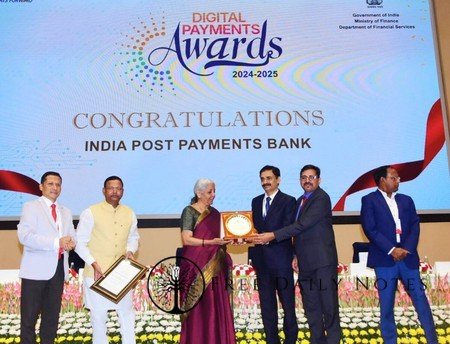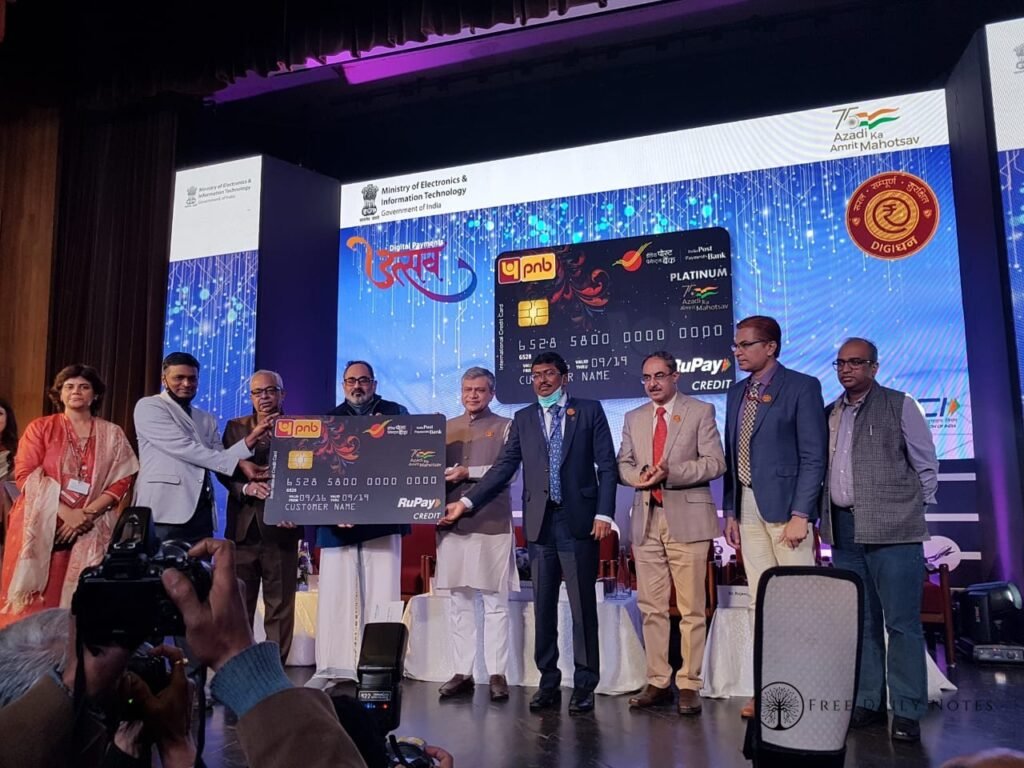
Remember when we all thought government banks were dinosaurs that would never catch up with nimble fintech startups? Yeah, I got that spectacularly wrong.
I was sitting in a fintech conference in Bengaluru last year, listening to the usual suspects talk about disruption and innovation, when someone mentioned India Post Payments Bank winning yet another digital payments award. The person next to me, a venture capitalist with serious skin in the fintech game leaned over and whispered, “They’re actually embarrassing some of my portfolio companies now.”
Wait, what? IPPB? The same banking service operated through our neighborhood post offices? That moment sparked my curiosity about how this unlikely player had become such a formidable force in India’s digital payments revolution. I’ve spent the last few months digging into this story, talking to insiders, and watching the transformation firsthand. And let me tell you, it’s not what I expected to find.
The Unexpected Rise | How Digital Payments Award for IPPB Changed the Banking Landscape
Let’s be honest, nobody saw this coming. When India Post Payments Bank launched in 2018, most of us viewed it with the skepticism we reserve for most government initiatives in the tech space. A payments bank run by the postal department? Please.
But something fascinating happened over the next few years. While flashy startups were burning investor cash to acquire urban customers, IPPB was quietly building something more sustainable and, frankly, more important.
The turning point at least in terms of public perception came when IPPB received its first major digital payments award in 2020. I remember the collective surprise in banking circles. It wasn’t just that they won; it was what they won for: bringing digital financial services to places where even mobile network coverage was a luxury.
“We weren’t trying to compete with the UPIs and Paytms in their own game,” explained Ravi Kumar, a senior technology officer at IPPB whom I spoke with earlier this year. “We were solving a completely different problem: how do you digitize transactions for someone who’s never used a smartphone?” This is where IPPB had an unexpected advantage. Their network of postal workers, those familiar faces who’ve been delivering mail to the remotest corners of India for generations, became banking correspondents. They carried micro-ATMs and biometric authentication devices, turning human trust into financial inclusion.
The initial award recognized this approach. Subsequent accolades came for building on this foundation with increasingly sophisticated yet accessible solutions.
From Postal Service to Payment Powerhouse
But this transformation didn’t happen overnight. India Post has been around since… well, forever, it seems. The postal network is older than independent India itself, with over 155,000 post offices across the country. That’s more branches than all Indian banks combined. A staggering 90% of these offices serve rural areas, where conventional banks fear to tread because of operational costs.
So when demonetization happened in 2016, followed by the government’s aggressive push toward digital India, someone had the brilliant idea: why not leverage this existing infrastructure for financial services?
The implementation, however, was anything but smooth. Early days were plagued with connectivity issues, staff resistance, and technical glitches. I visited a few post offices in 2019 for an unrelated story and saw firsthand the growing pains of long queues, confused customers, and frustrated postal workers trying to explain digital banking concepts.
“I spent more time fixing the biometric device than actually processing transactions,” a postal worker in Maharashtra told me then, laughing about those early challenges.
But persistence pays. By late 2020, the same office was processing over 200 digital transactions daily. That’s when the awards started coming.
Behind the Scenes | What Makes IPPB’s Digital Payments Award-Worthy Innovations Different

The thing about most digital payment solutions in India is that they’re designed by urban engineers for urban users. They assume certain basics: reliable internet, smartphone familiarity, and a level of digital literacy.
IPPB had to throw that playbook out the window. And that’s precisely what made their solutions award-worthy.
Take their “Aadhar Enabled Payment System” implementation. While the technology itself wasn’t new, IPPB’s deployment model was revolutionary. Instead of expecting customers to come to them, they reversed the flow. Banking came to people’s doorsteps through postal workers equipped with AePS devices.
No internet needed on the customer’s end. No smartphone required. Just a fingerprint. I witnessed this system in action during a visit to a village outside Lucknow. An elderly woman, who had never entered a bank branch in her life, received her pension through a simple fingerprint verification when the postman visited. The entire transaction took less than two minutes.
“This doesn’t look impressive to tech people in cities,” said Meera Ranjan, a department head at IPPB who’s been instrumental in several award-winning initiatives. “But it’s precisely this simplicity that made it work where fancier solutions failed.”
Another award-winning innovation was their voice-based UPI system, designed specifically for visually impaired customers and those who cannot read. Accessibility features aren’t usually the sexiest part of fintech, which might explain why many private players overlooked this segment entirely.
The Technology-Trust Hybrid Model
What particularly fascinates me about IPPB’s approach is how they’ve married cutting-edge technology with old-fashioned human relationships.
Most digital payment platforms try to remove human interaction completely in the name of efficiency. IPPB went the opposite route. They recognized that in many parts of India, particularly rural areas, financial transactions are still built on trust and personal relationships.
So instead of eliminating the human element, they augmented it with technology. “The postman has been entering people’s homes for generations. That trust is our biggest asset,” explained Ranjan. “Our digital tools simply enhance what was already working.”
This hybrid model which I’m tempted to call “high-tech, high-touch” earned IPPB recognition at several digital banking awards in India, including a specialized category created to acknowledge innovative approaches to financial inclusion.
It’s not perfect, of course. The system can be slower than pure digital solutions. There are occasional authentication failures. And scaling human-intensive services comes with its own challenges.
But as one judge from a recent award committee pointed out, “We’re not just evaluating technical elegance. We’re looking at real-world impact. And by that measure, IPPB’s solutions are exceptional.”
Beyond Recognition | How the Digital Payments Award Has Transformed IPPB’s Rural Impact
Awards are nice for the display cabinet, but do they actually change anything on the ground? In IPPB’s case, surprisingly, yes.
The recognition from various digital payments awards has created a virtuous cycle. Greater visibility led to increased adoption, which provided more data to refine services, which in turn led to better solutions and more awards.
But the real transformation has been in rural India. I traveled to a cluster of villages in eastern Uttar Pradesh last month, places that conventional banks had written off as financially unviable. What I found was a quiet revolution in progress.
In Saraiya village, a women’s self-help group now processes all their internal loans through IPPB’s digital platform. Previously, they operated exclusively in cash, which created accounting challenges and limited their growth. The shift to digital has allowed them to maintain better records, build credit histories, and even access formal loans from the bank.
“Earlier, we were invisible to the banking system,” said Lakshmi Devi, the group’s treasurer. “Now we have statements, transaction histories, everything. It gives us power we never had.” This is financial inclusion in action—not just as a buzzword in award ceremonies, but as lived reality.
The impact extends beyond just banking. With digital payment capabilities, small rural businesses have begun participating in e-commerce. Local artisans sell nationally. Remittances from migrant workers reach families faster and cheaper.
The Unexpected Beneficiaries
One population that has particularly benefited though rarely mentioned in formal award citations—is elderly pension recipients.
India’s social pension schemes are lifelines for millions of seniors, but the delivery mechanism has historically been problematic. Recipients often had to travel long distances to banks, wait in queues for hours, or depend on others to collect their money creating opportunities for exploitation.
IPPB’s door-delivery of pensions through AePS has been transformative for this vulnerable group. “My son used to take a day off work every month to help me collect my pension,” said 78-year-old Ramesh Chand from a village near Kanpur. “Now the postman brings it to my doorstep. I use my finger to sign, and it’s done.” The digital payments award IPPB received in 2021 specifically acknowledged this impact on elderly welfare—an area private fintech companies have largely ignored because, let’s face it, it’s not where the big money or flashy growth metrics are.
But that recognition has encouraged IPPB to double down on serving vulnerable populations. They’ve since introduced specialized services for differently-abled customers and are working on solutions for tribal areas with limited connectivity.
Hmm, I realize I’m making this sound like an unqualified success story. That’s not quite right. There have been significant challenges too, which the award citations conveniently glosse over. Let me try to present a more balanced picture…
The Growing Pains | Challenges Behind IPPB’s Digital Payments Award Journey

Not everything has been smooth sailing in IPPB’s digital transformation. For every award-winning innovation, there have been hurdles that required persistence to overcome.
Technical infrastructure remains a challenge in many rural locations. During monsoon seasons, connectivity becomes particularly problematic. Some postal workers I spoke with described carrying out transactions offline and then traveling to areas with better connectivity to sync their devices. There’s also the matter of digital literacy not just among customers but sometimes among postal staff themselves. Many postal employees who had spent decades sorting letters suddenly found themselves explaining UPI transactions and troubleshooting biometric devices.
“I was terrified of making mistakes with people’s money,” admitted Suresh Khanna, a postal worker with 27 years of service in Rajasthan. “It took me months to get comfortable with the technology.” Training such a vast workforce distributed across difficult geographies has been an enormous undertaking, one that’s still in progress.
Security concerns have emerged as well. As digital transactions increase, so do attempts at fraud. IPPB has had to invest significantly in customer education about safe digital practices—no small task when many of your customers are first-time users of financial technology.
And then there’s the challenge of profitability. While social impact is important, sustainability requires a viable business model. IPPB has been working to find the right balance, adding more revenue-generating services while maintaining its focus on inclusion.
None of these challenges diminish IPPB’s achievements. If anything, they make the recognition through digital payments awards more meaningful. It’s one thing to build elegant solutions in ideal conditions; it’s quite another to make technology work in the messy, complex reality of rural India.
Future Horizons | What IPPB’s Digital Payments Award Means for India’s Financial Inclusion
So where does IPPB go from here? The awards have created expectations. The question now is whether they can continue to innovate while scaling their impact.
Based on my conversations with IPPB officials and industry observers, several trends are emerging: First, there’s growing collaboration between IPPB and fintech startups. Rather than competing head-on, they’re finding complementary strengths. IPPB brings vast reach and trust; startups bring agile innovation and specialized solutions. This partnership approach could accelerate digital financial inclusion beyond what either could achieve alone.
Second, IPPB is moving beyond basic payments into broader financial services. Recent awards have recognized their efforts in micro-insurance and small-credit products designed specifically for rural customers. These services use transaction histories from their payments platform to assess creditworthiness, a prime example of how digital payments can be a gateway to fuller financial inclusion.
Third, there’s increasing international interest in IPPB’s model. Several countries with large rural populations are studying the Indian approach of leveraging postal networks for digital financial services. The digital payments awards have brought global visibility to these efforts, potentially creating a blueprint that can be adapted elsewhere.
“We’re not just building a bank; we’re creating a template for inclusive finance that works in challenging environments,” said an IPPB executive who preferred not to be named. “The awards help others see that this approach is viable.”
The Governance Challenge
One aspect that keeps me skeptical about IPPB’s future despite their impressive track record of digital payments awards is the governance question. As a government entity, IPPB operates under bureaucratic constraints that private competitors don’t face.
Decision-making can be slower. Innovation sometimes takes a backseat to compliance and procedure. Leadership changes with political appointments rather than purely merit-based selection. Will these structural issues eventually hamper IPPB’s ability to stay innovative? Or will the recognition from awards help insulate their innovation teams from excessive interference?
I don’t have a definitive answer, but from what I’ve observed, IPPB seems to be developing a hybrid culture—maintaining necessary compliance as a government entity while creating spaces for innovation to flourish.
“We’ve had to create a bank within a bank,” explained a senior executive. “Our digital innovation teams operate with more autonomy than traditional departments, which helps us move faster.”
If they can maintain this balance, the future looks promising. The digital payments award recognition has already helped them attract talent that might otherwise have gone to private sector fintech—another unexpected benefit of their growing reputation for innovation.
FAQs
How has the digital payments award impacted IPPB’s standing in India’s banking sector?
The recognition through various digital payments awards has transformed IPPB from being seen as just another government initiative to a genuine innovator in the financial inclusion space. Before these accolades, many banking professionals dismissed IPPB as a well-intentioned but ultimately ineffective project.
What technologies behind IPPB’s digital payments award are most innovative?
While IPPB uses many standard technologies, their innovation lies in deployment and adaptation rather than creating entirely new tech. Their award-winning approaches include simplified biometric authentication that works in low-connectivity environments, voice-guided interfaces for users with limited literacy, and offline transaction capabilities that sync when connectivity returns.
Can other countries replicate the model that earned IPPB its digital payments award recognition?
Several countries are already exploring adaptations of IPPB’s model, particularly those with extensive postal networks and large unbanked populations. Delegations from countries across Africa and Southeast Asia have visited to study IPPB’s approach after learning about their digital payments award achievements.
What misconceptions exist about IPPB’s digital payments award-winning services?
The biggest misconception is that IPPB’s digital solutions are primitive compared to commercial fintech offerings. Critics sometimes dismiss their award-winning innovations as “tech with training wheels.” This misses the point entirely. IPPB’s solutions are deliberately designed to be accessible rather than cutting-edge.
How do IPPB’s digital payments award criteria differ from typical fintech awards?
The awards IPPB has received typically evaluate different criteria than mainstream fintech competitions. While traditional fintech awards often focus on user growth, transaction volumes, and technical innovation, IPPB’s recognitions tend to emphasize financial inclusion impact, accessibility for underserved populations, and adaptability to challenging environments.
What role do postal workers play in IPPB’s digital payments award-winning model?
Postal workers are the unsung heroes behind IPPB’s award-winning digital payment solutions. They serve as the human interface for technology, explaining digital concepts in simple terms, helping with first-time transactions, and troubleshooting issues on the spot. Their established presence in communities creates trust that pure digital platforms struggle to build.



